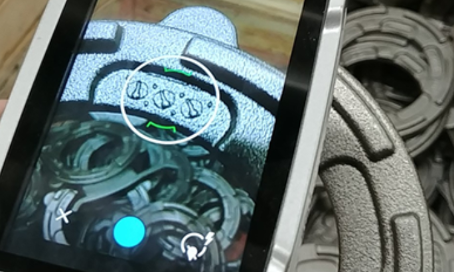Source: DISA
DISA released a new “casting-level” tracking system called Trace and Guidance (TAG) that establishes a link between process and quality data, allowing green sand foundries to achieve full casting traceability. Foundries can use TAG to trace every casting they produce instead of relying on less accurate batch data. The new system allows operators to gain an individual-casting-level view of their whole process.
“Finding the root cause of scrap can be extremely difficult, making it hard to reduce quality-related costs,” stated Per Larsen, innovation manager at DISA. “DISA TAG adds a unique ID to each casting which operators simply scan to link the casting to a specific defect cause or to look up the process parameters used to make it. DISA TAG promises to be a game changer, helping to reduce quality costs to previously unseen levels.”
The DISA TAG system works in three steps. First, foundries install marking units in their pattern plates to give each casting a unique TAG ID. After casting sorting, a hand scanner is used to read the codes of scrapped castings and link them to specific defect types. That quality data is automatically stored in the TAG database.
In the final step, each casting’s unique code and specific defect are linked to that casting’s process data. Engineers can then correlate specific detects with the process data to find hidden insights and the root causes of defects.
DISA TAG is well-suited to automated analytics that leverage Artificial Intelligence (AI). The casting-level data helps the AI self-learn much more quickly, improves optimization accuracy and so maximizes scrap reduction. It’s an essential part of the journey to zero defect manufacturing and a more sustainable future.
Source: DISA


